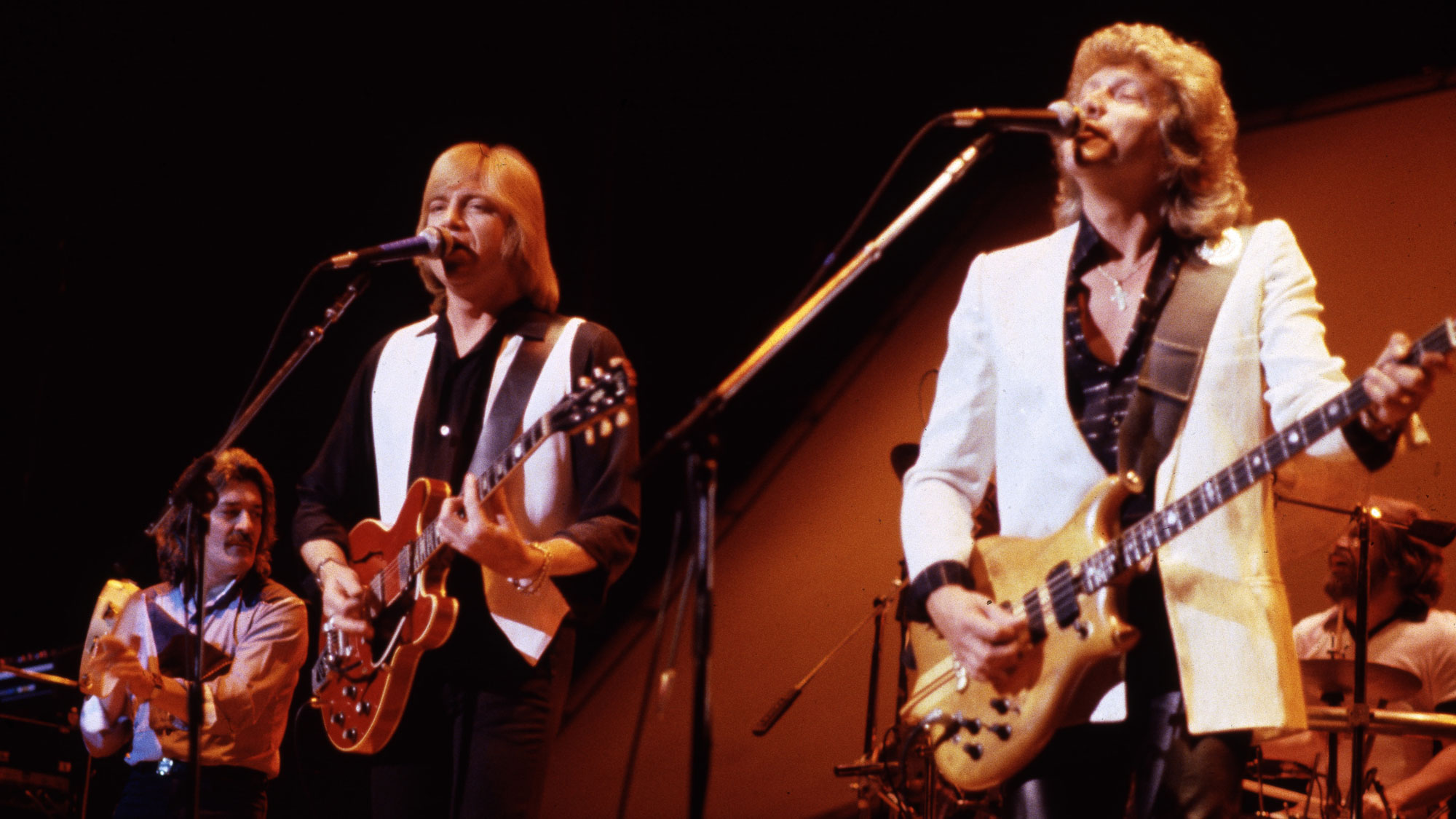
Like their contemporaries Fleetwood Mac, The Moody Blues was a band that formed during the British R&B boom of the 1960s and subsequently underwent a change of lineup and sound.
The original group came out of the British blues scene in Birmingham in 1964, and featured guitarist Denny Laine who stayed with the band for just two years. He would go on to be a pivotal member of Wings, with ex-Beatle Paul McCartney.
The original lineup found success with their smash Go Now, which hit the number one spot in the UK charts and reached the top 10 in the US. After founding members Laine and Mike Pinder left they were replaced by John Lodge who sang and played bass, and Justin Hayward on lead guitar and vocals. It’s Hayward who forms the basis of this article.
Initially the new line-up struggled to replicate the group’s success, and after a difficult time on the blues scenes changed direction and embraced the nascent psychedelic rock sound that was beginning to take shape at the time.
This version of The Moody Blues is widely accepted as pioneering the progressive rock sound that would really develop in the early 1970s.
With this new band of musicians and a whole new sound came another brace of hits, with 1967’s Nights In White Satin probably being the band’s best known and most enduring song. Big albums include Days Of Future Passed, In Search Of The Lost Chord, and the masterful, On A Threshold Of A Dream.
Prior to joining The Moody Blues, Justin Hayward had worked with '50s rock and roll star Marty Wilde. However, his music career actually began when he was just 18 years old and worked as a songwriter for skiffle legend Lonnie Donegan.
Hayward is proficient on both electric and acoustic guitar and his fingerpicking style is very much of its time, with evidence of the early Donovan style in his playing. To that end, you can expect altered basslines and picked arpeggio patterns, but there’s much more to his playing than that.
In this piece, we are exploring how he would create two interlocking acoustic guitar parts that would form a backdrop for his vocals.
This is actually quite a tricky skill as you must ensure the parts complement each other and ‘make sense’ musically. If they’re too busy the sound will be cluttered, if they’re too sparse it’s likely to sound thin.
Guitar one would work as a main accompaniment on its own, while guitar two is designed to add something in complementary in a slightly higher register. And although it follows the same chord progression, occasionally some simple harmonies emerge and varying bass notes happen.
Finally, don’t forget to tune the sixth string down to D to play the low and resonate bass D notes. As a final pointer, when playing or recording parts like this ensure your timing is spot on so the playing interlocks well!
Get the tone
Amp Settings: Gain 3, Bass 7, Middle 6, Treble 7, Reverb 2
Hayward tends to favour dreadnought style guitars when playing acoustic and has used a Martin D-28 extensively. He recently favours a Texas-built Collings D3. While any decent acoustic guitar will work for this piece, I used a Martin Custom Shop Expert 1937 D-28 into a Soyuz 017 microphone for recording guitar.
Example 1
[Bars 1-16] This almost pianistic approach requires even balance across the fretting-hand fingers. To play the chords on the first, second and third strings use the third, second and first fingers respectively and the thumb for the fourth string – the classic ‘pima’ pattern.
Make sure your rhythm is consistent all the way through and aim to count ‘one and two and three and four and’ with a metronome to ensure you are getting everything solidly in place.
Example 2
[Bars 1-16] Where guitar one is the main rhythm part this guitar is designed to sit over the top of it and fill the sound out. You can use the same picking-hand fingerings as the previous part but you can also try using the thumb, first and second fingers on the third, second and first strings respectively.
For the busier arpeggios from bar 9 use the thumb on the fourth string and the third, second and first fingers on the third, second and first strings respectively. This part actually makes for a great stand-alone study for increasing the speed and accuracy of your picking hand.







